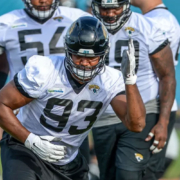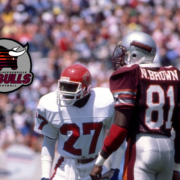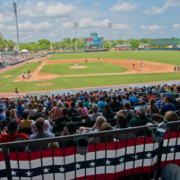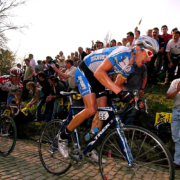Jaguars Ease Into Camp
In the first week of training camp all 32 NFL teams believe. They’re healthy, their free agents are signed and generally everybody’s ready to go. Yannick Ngakoue and the Jaguars negotiations notwithstanding. They’ll come to a deal.
There are different approaches to training camp. Since there used to be six preseason games, NFL camps were two months long. The Cowboys one year brought 200 players to camp. When Don Shula was the head coach of the Baltimore Colts he wrote a letter at the beginning of summer to each of his players outlining his expectations of their fitness and weight on the first day of camp.
Now it’s a year round process to be ready to play in 16 regular season NFL games. Between off-season workouts, OTA’s and mini-camps, teams have a pretty good gauge of their players’ fitness status for most of the year. There are spots in the schedule where a player is on their own but most know the competitive nature of the job and keep staying fit near the top of their priorities.
There are exceptions. Leonard Fournette last year. The Jaguars knew past players Natrone Means and Damon Jones had a tendency to slip during the offseason, so they tried to give them plans, have them check in and be ready to play.
“I was very pleased with the way the team came back in from the standpoint of weights,” Head Coach Doug Marrone said this week prior to the first day of camp. “We’re in great shape there from a standpoint of conditioning which is outstanding, so I’m very, very happy with where we are with what the players have done.”
At the end of last season, Marrone quantified players who “missed their marks” in the offseason when it came to their weight and their fitness level noting that those players missed an average of 5 ½ games during the regular season.
So not only were they more vigilant in the offseason about players keeping their fitness up, but also their approach to training camp for 2019 is different.
“We’ve tried to build in better recovery time,” Marrone noted. The one thing you’re going to see in practice is we’re looking to build up our practices, meaning that we’re going to take it in a progression and build up to a level where we can go. These first 10 days have been a high level of soft tissue injuries.”
“It’s way different. It’s a nice change, though,” Calais Campbell said about this year’s camp with a laugh. “I think the team is maturing and he’s allowing us to be pros and to kind of do what we need to do to get ready. We have a lot more free time which I think allows us to take care of our bodies.”
Measuring height and weight and passing the conditioning test are part of a numbers game every team keeps track of but players can tell, in the locker room and on the field, who showed up leaner, quicker and ready to play.
“Yeah. I think that anytime you come off of a season where you didn’t do as well as you wanted to, guys kind of—you develop a chip on your shoulder again,” Campbell explained. “I’m sure you can see it around when you look at guys, they’re working hard trying to earn back that respect that we once had,”
New Jaguars Quarterback Nick Foles has his own routine in the offseason. While he stays close to his playing weight and looks like a starter in camp (lots of spirals, not many balls on the ground) he doesn’t throw much out of season. Maybe three times. Once with his wife.
“You know that you might not be as accurate,” Foles explained. “And you may not be as great on your deep ball, that’s part of it. That’s just something that I’ve always done. I didn’t just switch it, that’s just what’s best for me and some guys throw all the time, that’s just how it is.”
The new schedule is also giving the Jaguars a chance to spend more time together off the field, building the things Marrone believes makes them a team.
“I’m not just talking to the offensive guys,” Foles said of the off-field conversations he’s having. “I want to see what the defense sees, I want to see what they’re thinking based on our splits, what they’re seeing based on my footwork, because I feel like we can make each other better as a team.”
After their success in 2017, the Jaguars showed they couldn’t handle it last year falling back to 5-11. This year’s camp, according to the players, already has a different feel.
“Well, I’ll say that there’s an energy,” Campbell explained. . “There’s just a pep in our step and I think that comes from being in quality shape. Guys are ready, focused, locked in. I think it’s not even just physical shape.”
Now in his 12th year in the NFL, Campbell explained the work he puts in contributes to his longevity in the league.
“The guys who are the most successful are usually the hardest-working people, and so I try and be on the same par, the same playing field as those guys.” he said. “But I also know that you only get so much tread on your tires and so I have to be smart and take advantage of allowing my body to adjust slowly. I can’t just go out here and act like I’m 25 again.”
So as the Jaguars ease into the physical demands of training camp, Marrone has laid out his expectations.
“One, I obviously want everyone to be on time. No. 2, I want everyone to be prepared. No. 3, I want everyone to give their best effort. No. 4, I want us to focus on winning. That is why it is a performance-based business and you have to make sure you are ready to go and do the things during the week, but you are going to be judged, myself included, the coaches included, on what you do on that Sunday.”





